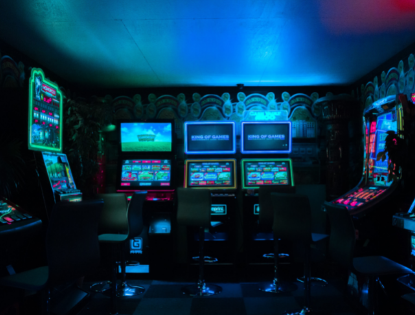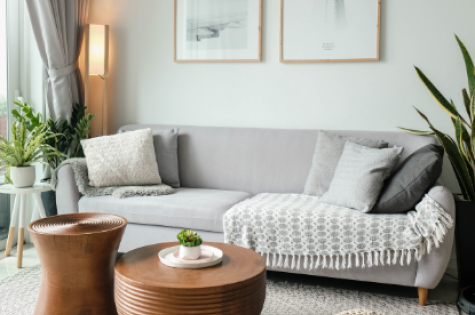When it comes to transforming a house into a home, interior design expert, TV personality and Luxaflex National Brand Partner, Neale Whitaker, certainly knows a thing or two. On the 19th of June Neale hosted an online interior decorating Luxaflex Masterclass, discussing the four key components to consider when it comes to home design including colour, light, functionality and mood.
Colour

When it comes to decorating, colour has a profound influence on our mood. The ‘60/30/10’ rule is a useful place to start when you’re planning a colour scheme, especially if you are living in an open-plan environment. “The rule means using approximate percentages of colour to create balance. For example, using 60% of neutral or white, adding 30% of toning shades and finally a 10% flourish of contrasting colour,” says Neale. This creates an even palette and doesn’t allow for colour clashes. Neale recommends experimenting with colour in smaller areas first before committing to larger spaces.
“Even though neutrals don’t sit on the colour wheel, they have hints of colours that do and these should be considered when mixing neutrals and colours,” says Neale. “Find out where stronger colours sit on the colour wheel and this will determine whether you opt for cool or warm neutrals. Blue-based colours will work best with cool whites and greys, while red-based colours work with warmer whites.
A key colour trend for the coming year is warm, earthy and spicy tones. This includes pale beige, biscuit and parchment shades vying with whites and greys as a backdrop to rich colours like bark, olive and ochre. They have a subtle intensity and can be incorporated in spaces to create a cosy vibe.
Light

Correct lighting is fundamental to how spaces function and how we react to them. Australia has extraordinary natural light and harnessing this can improve the livability of our homes. There are three types of lighting to consider in the home - general lighting, task lighting and accent lighting.
“General lighting is a light source such as downlights or pendants that are used to illuminate a space from a functional perspective. Task lighting is used for specific tasks such as reading, desk work, crafts and can have an aesthetic value, whereas accent lighting creates ambience,” adds Neale.
The most interesting and recent trends include controlling natural light and the transformative effect of skylights. However, a sophisticated new generation of window furnishings has also evolved with the growing emphasis on indoor-outdoor living.
“A recent popular trend is using sheer curtains in conjunction with blinds. It’s a combination that feels perfect for our light and our climate, and it can also add depth and interest to a room. Create this look starting with window coverings such as Pirouette® Shadings or Duette® Shades as the base layer of the window. These offer performance benefits such as precise light control, privacy and insulation and energy efficiency. Next, add the finishing layer with Luxaflex Curtains, which gives homeowners the opportunity to expand their design options,” says Neale. A clever combination of sheers and window coverings meet all of a home’s needs and will help keep the house cool in summer and warm in winter.
Functionality

How your home functions will impact your quality of life and how you live in it. With the pandemic shifting our relationship with our homes, most of us are spending more time at home than ever before.
“Kitchens and bathrooms are important focal points in our homes and arguably the most expensive spaces to change. Although, in recent years they have also become the spaces that we are most likely to want to personalise,” says Neale.
“Be realistic about what you require of a kitchen. In most cases it’s an important home hub,” he adds. “Considering your priorities and what you need to live well and comfortably is crucial to sticking to a budget and creating a functional living and working space.”
You should consider current trends that will impact functionality in years to come. These include multifunctional living, downsizing, decluttering, technology and sustainability.
Mood

Creating the mood of your home is what will make it feel unique and individual. The three most popular interior design styles in Australia are Hamptons, Scandinavian and Contemporary. Identifying the characteristics of these looks can help you decide where you are stylistically, and how you can create mood in your own home.
“Identify a general style that appeals to you and then layer it with your personal choices. Don’t be afraid to mix styles and eras,” says Neale.
“Art and books are two of the most impactful ways of adding mood and personality to your home. Your choice of art and books are the most personal expressions in the room. Make art choices independent to what is happening elsewhere in your home and go with what you love.”
The resurgence of house plants has been one of the most interesting trends of recent years. “People are acknowledging the therapeutic benefits of greening homes in this the simplest of ways. Plants are a great way to add depth, texture and interest to a room,” adds Neale.
Neale Whitaker’s four fundamentals when it comes to design including; colour, light, functionality and mood have the ability to transform a house into a home. These design tips can be utilised in both indoor or outdoor areas to allow for a cohesive and personalised space.
For further information, visit www.luxaflex.com.au
















__small.png)










